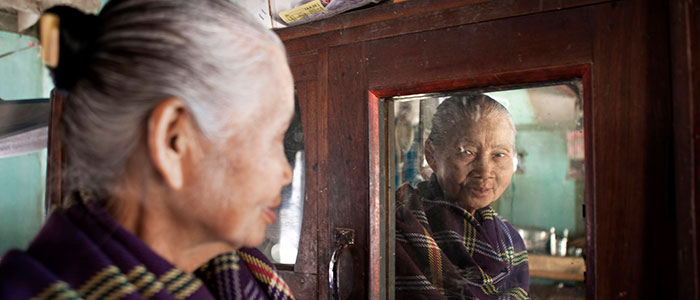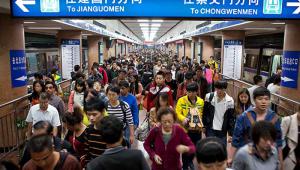Web_ElderlyWomanMyanmar_iStock_000017853743_Large.jpg

An elderly woman looks in the mirror in Myanmar
East Asia already has the world’s largest share of people over 65 and it populations are ageing faster than in any other region in history, the bank said. It warned that the rapid pace and sheer scale of the trend will bring policy challenges, economic and fiscal pressures and social risks.
Axel van Trotsenburg, regional vice president of the World Bank’s East Asia and Pacific Region, said the region has “undergone the most dramatic transition we have ever seen”, with all developing countries in East Asia threatening to get old before they get rich.
Live Long and Prosper: Aging in East Asia and the Pacific said pension spending is projected to increase by 8-10% of gross domestic product by 2070, and today’s older population is less likely than before to have adequate family support.
Costs of cancer, heart disease, diabetes and other chronic illnesses could account for 85% of all disease burdens in the region by 2030, but its health systems remain unprepared to deal with these age-related costs.
The World Bank report attributes the region’s rapid ageing to its breakneck economic development in recent decades. Higher incomes and better education have lead to steady increase in life expectancy which is accompanied by plunging fertility rates, leaving a growing number of developing countries with a birth rate well below that needed to keep the population stable.
The bank’s analysis found that, by 2060, one fifth of the oldest countries in the world will be in East Asia compared to one in 25 in 2010.
The pace of ageing varies across countries in the region. At least 14% of the population is over 65 in richer countries such as Japan, Singapore and South Korea, while this is only around 4% in younger and poorer countries including Cambodia, Laos and Papua New Guinea. But these countries will begin ageing rapidly in 20 to 30 years, the bank said.
Developing middle-income countries, however, face the most pressing challenges, the bank warned. China, Thailand and Vietnam need to find ways to manage their already rapidly ageing populations.
This is possible while sustaining economic dynamism, Sudhir Shetty, chief economist for the World Bank’s East Asia and Pacific Region said, but will require “tough policy decisions” and “significant behavioural change” on the part of workers, employers and society in general.
The report recommends encouraging more women to join and remain in the labour force for longer, reforms to pension schemes including gradual increases in the retirement age and a shift in the focus of health systems from hospitals to primary care.
It noted that East Asia already has several advantages to work with, with its people already working for longer and saving more than their counterparts elsewhere as well as less generous social security entitlements.













